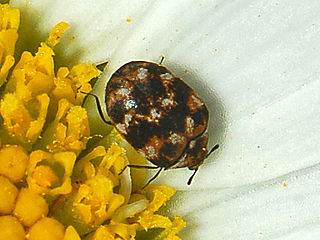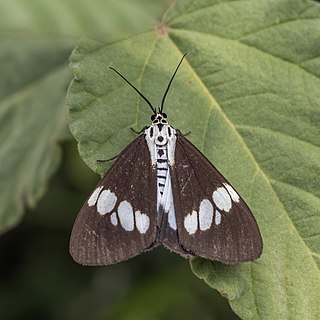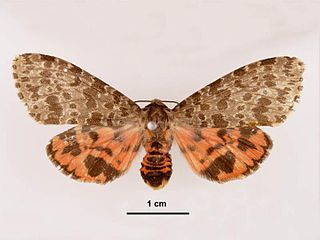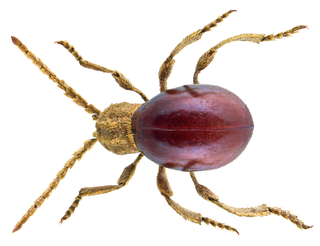
Beetles are insects that form the order Coleoptera, in the superorder Holometabola. Their front pair of wings are hardened into wing-cases, elytra, distinguishing them from most other insects. The Coleoptera, with about 400,000 described species, is the largest of all orders, constituting almost 40% of described insects and 25% of all known animal species; new species are discovered frequently, with estimates suggesting that there are between 0.9 and 2.1 million total species. Found in almost every habitat except the sea and the polar regions, they interact with their ecosystems in several ways: beetles often feed on plants and fungi, break down animal and plant debris, and eat other invertebrates. Some species are serious agricultural pests, such as the Colorado potato beetle, while others such as Coccinellidae eat aphids, scale insects, thrips, and other plant-sucking insects that damage crops. Some others also have unusual characteristics, such as fireflies, which use a light-emitting organ for mating and communication purposes.

John Edward Gray was a British zoologist. He was the elder brother of zoologist George Robert Gray and son of the pharmacologist and botanist Samuel Frederick Gray (1766–1828). The standard author abbreviation J.E.Gray is used to indicate this person as the author when citing a botanical name. The same is used for a zoological name.

The rove beetles are a family (Staphylinidae) of beetles, primarily distinguished by their short elytra that typically leave more than half of their abdominal segments exposed. With over 66,000 species in thousands of genera, the group is the largest family in the beetle order, and one of the largest families of organisms. It is an ancient group, with fossilized rove beetles known from the Triassic, 200 million years ago, and possibly even earlier if the genus Leehermania proves to be a member of this family. They are an ecologically and morphologically diverse group of beetles, and commonly encountered in terrestrial ecosystems.

Dermestidae are a family of Coleoptera that are commonly referred to as skin beetles. Other common names include larder beetle, hide or leather beetles, carpet beetles, and khapra beetles. There are over 1,800 species described.

The varied carpet beetle is a 3 mm-long beetle belonging to the family Dermestidae, positioned in subgenus Nathrenus. They are a common species, often considered a pest of domestic houses and, particularly, natural history museums, where the larvae may damage natural fibers and can damage carpets, furniture, clothing, and insect collections. A. verbasci was also the first insect to be shown to have an annual behavioral rhythm and to date remains a classic example of circannual cycles in animals.

This glossary of entomology describes terms used in the formal study of insect species by entomologists.

Athous haemorrhoidalis is a species of European and Asian click beetles in the genus Athous. Several variations are recognized.

Nepita is a monotypic moth genus in the subfamily Arctiinae erected by Frederic Moore in 1860. Its only species, Nepita conferta, the footman moth, was first described by Francis Walker in 1854. It is found in India and Sri Lanka.

Tropidophorus grayi, commonly called the spiny waterside skink, Gray's keeled skink, Gray's water skink, and the Philippine spiny stream skink is a relatively abundant but secretive skink species, a lizard in the family Scincidae. The species is endemic to the Philippines.
Olulis is a genus in the moth family Erebidae. There are about eight described species in Olulis, found in South, Southeast, and East Asia, and in Australia.

Chiasognathus grantii is a species of stag beetle found in Argentina and Chile. It is known as Darwin's beetle, Grant's stag beetle, or the Chilean stag beetle.

Nyctemera lacticinia, the common nyctemera, is a species of moth inf the family Erebidae. The species was first described by Augustus Radcliffe Grote in 1873. It is found in Japan, from the Oriental tropics of India, Sri Lanka, Myanmar to Taiwan, Peninsular Malaysia and Borneo.

Olepa ricini is a moth of the family Erebidae first described by Johan Christian Fabricius in 1775. It is found in Bangladesh, India, Nepal, and Sri Lanka. An older treatment placed the species in the genus Pericallia.

Mezium affine is a species of beetle in the family Ptinidae. Its common names include shiny spider beetle, northern spider beetle, and hood spider beetle. It occurs throughout the Northern Hemisphere, and it is an introduced species in Australia.

Zophomyia temula is a species of fly in the family Tachinidae.

Trictenotoma childreni, the log-boring beetle or brown steampunk beetle, is a species of beetle in the Trictenotomidae family. It can reach a body length of about 55–65 mm (2.2–2.6 in). Basic color of these large beetles is black, the body is slightly flattened. The elytra and the body are covered with thick grayish-yellow hair that fluoresce under ultraviolet light. It has large eyes, long antennae and legs, and powerful mandibles. This species can be found in Malaysia, Myanmar, Borneo, Thailand, Indonesia, Vietnam, China, and India in damp and seasonal forests.

Trictenotoma is a genus of beetle in the Trictenotomidae family. They have scales covering the elytra that fluoresce under ultraviolet light. Based on similarities in the larval characteristics, the family is thought to be closely related to the Salpingidae.

Acanthocnemus nigricans is a species of cleroid beetle, the only species in the genus Acanthocnemus and the family Acanthocnemidae. Originally native to Australia, the species has spread in modern times to numerous parts of the world, including Europe, Africa, India and Southeast Asia. The insects are pyrophilous, congregating around areas of recently burned wood, being attracted to chemicals found in wood smoke. They have specialised infrared receptors located on the thorax close to the head, used to detect heat. Their life cycle is poorly understood, though mating and egg-laying likely occurs within ash. The larvae are possibly saprophagous.

Neoitamus cyanurus, the common awl robberfly, is a species of 'robber fly' belonging to the family Asilidae.
Phobaeticus hypharpax, is a species of phasmid or stick insect of the genus Phobaeticus. It is found in Sri Lanka and Southeast India. It is closely related to the Sri Lankan species Phobaeticus lobulatus and the Southeast Indian Phobaeticus sinetyi. It is characteristic for the sparse but very broad and prominent serrations of the anterodorsal carina of the front femora and unarmed medioventral carina of the middle and back femora. It is also distinctive for its particularly long abdomen.




















